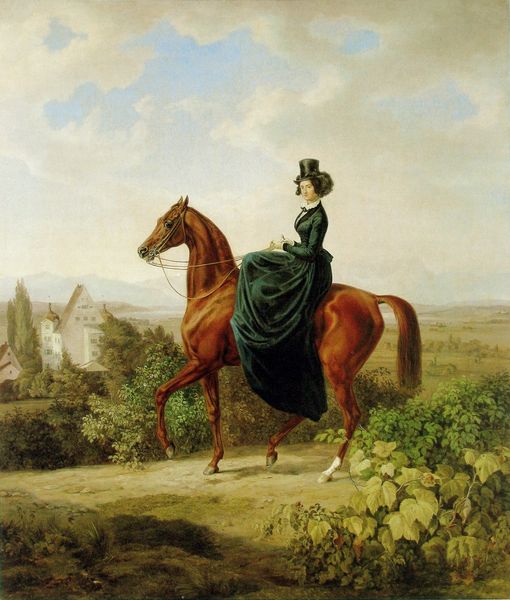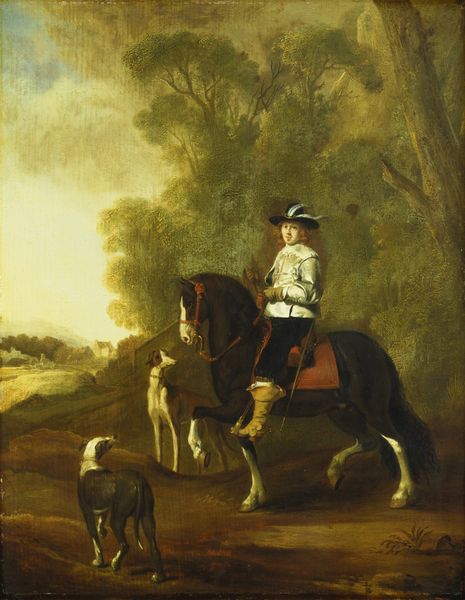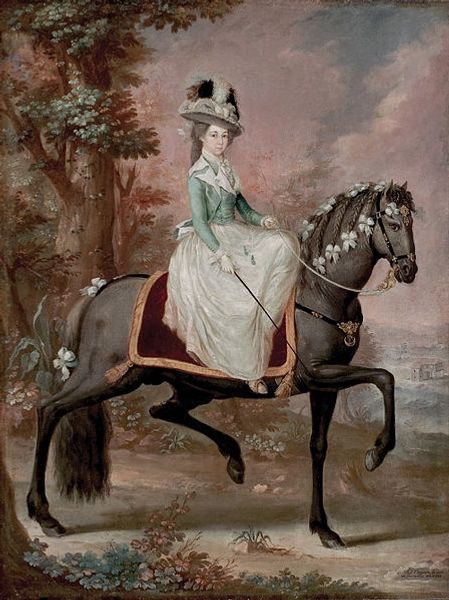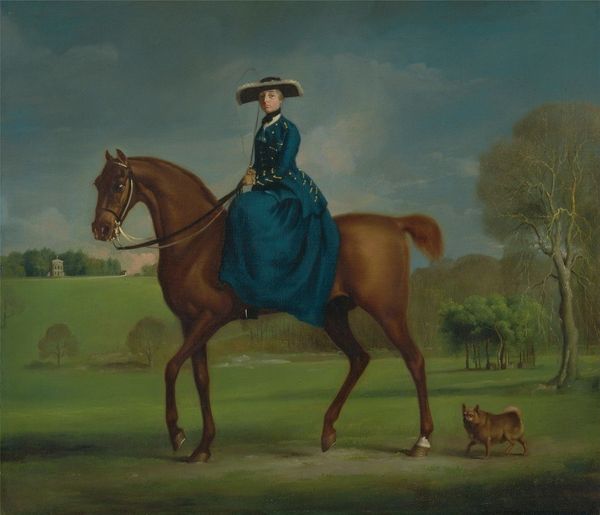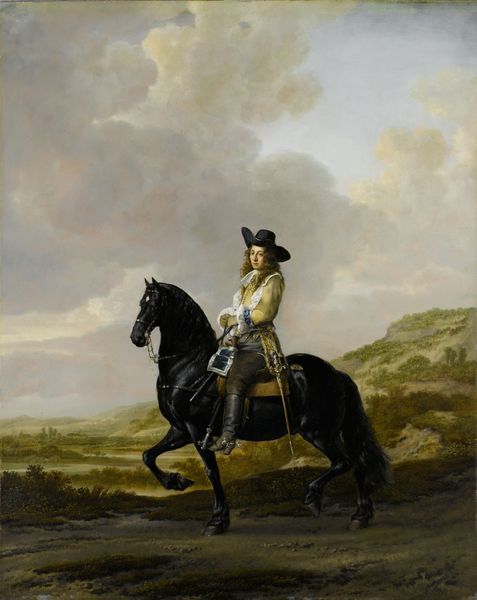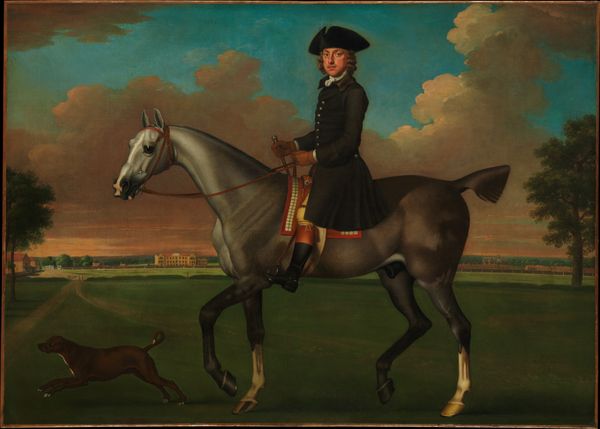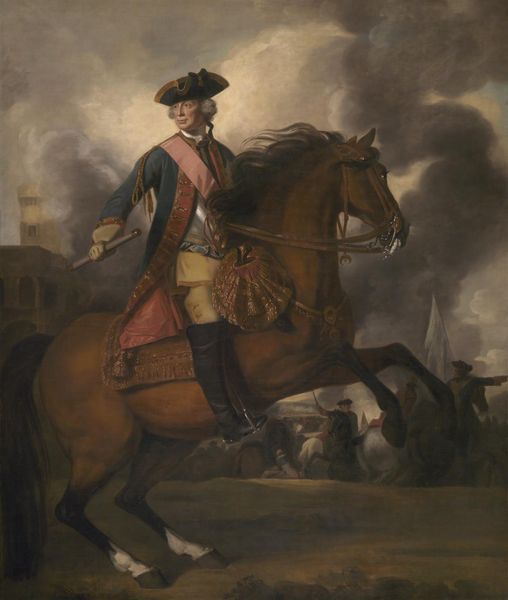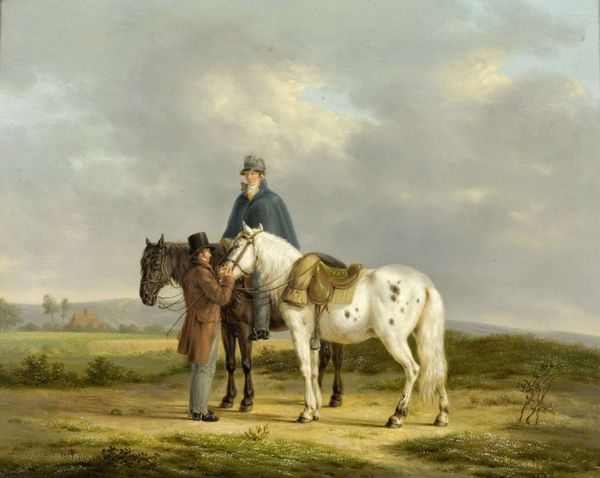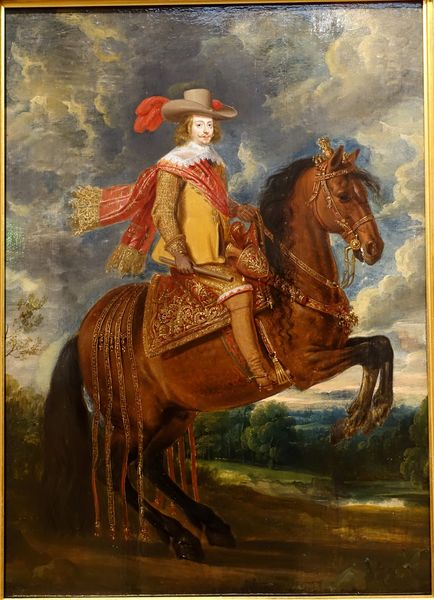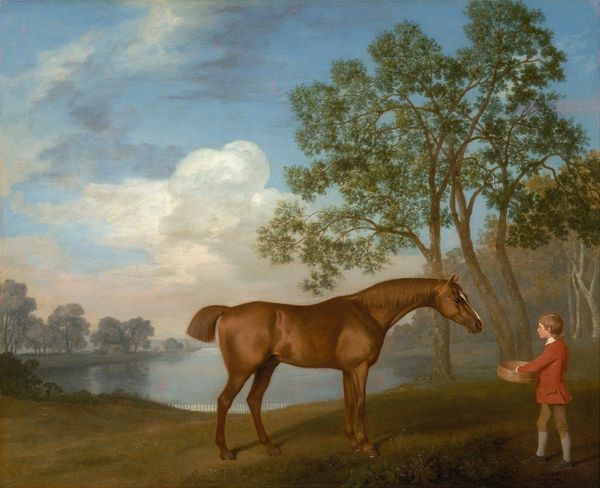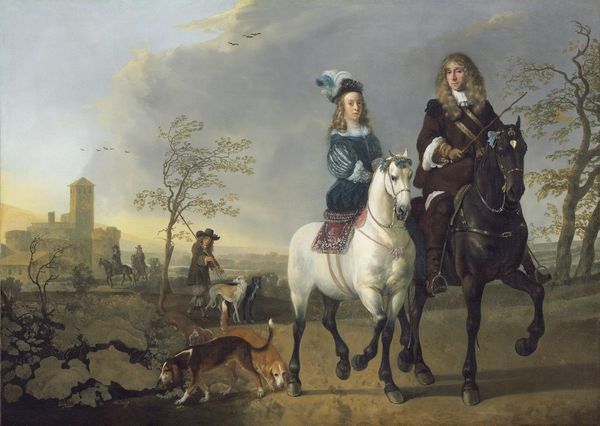
Frederika Sophia Wilhelmina of Pruissia (1751-1820), Equestrian portrait of the Wife of Prince Willem V 1789
0:00
0:00
Dimensions: height 86 cm, width 69.5 cm, thickness 4 cm, depth 9 cm
Copyright: Rijks Museum: Open Domain
Curator: Here we have Tethart Philip Christian Haag’s oil-on-canvas equestrian portrait of Frederika Sophia Wilhelmina of Pruissia, wife of Prince Willem V, painted in 1789. Editor: My first thought? Rococo restraint. It’s undeniably ornamental, look at that incredible hat, but there's an unusual stillness and cool color palette at play here, especially when considering the conventions of equestrian portraiture. Curator: The painting captures Frederika not merely as an individual but as a symbol of Dutch power. Equestrian portraits have a rich history linking riders to classical military prowess. Editor: Indeed, but the overall composition departs in interesting ways from tradition. See how the artist contrasts the dark, almost agitated sky, with the pale elegance of Frederika's dress. It gives it an unsettled feeling, don't you think? The textures, too. Look at the tension between the soft, yielding feathers and the smooth sheen of the horse. Curator: Note the subtle ways Haag positions Frederika in relation to her historical role. He subtly links the family through the symbol of a lady as guardian and protector. The controlled nature of her riding position reflects the expectation that women would be keepers of moral and social order, her fashionable yet not outrageous presentation implying good moral character. The architectural features of the town, visible in the background, highlight how she should represent and embody dynastic endurance. Editor: But it’s also just… off. The tonality, almost washed out, removes Frederika from the realm of the immediate, it gives her an allegorical flavor. Consider, for example, how the perspective seems slightly flattened. Curator: Yes, a common trend to emphasize status. In terms of legacy, she may be seen as more important as a wife of royalty as opposed to merely existing on her own. It allows for a much wider, sustained significance as far as projecting that ideal. Editor: An ideal… preserved here in pigment and line. It is interesting how seemingly “classical” forms, like an equestrian portrait, get twisted to reflect shifts in taste and power. Curator: For me, reflecting upon it more closely has me reevaluating the different standards expected between both the ruler, her husband, and herself and how those are subtly incorporated and played upon through Haag's artistry. Editor: And I now realize how Haag successfully manages to combine formality with that whisper of unrest.
Comments
No comments
Be the first to comment and join the conversation on the ultimate creative platform.
